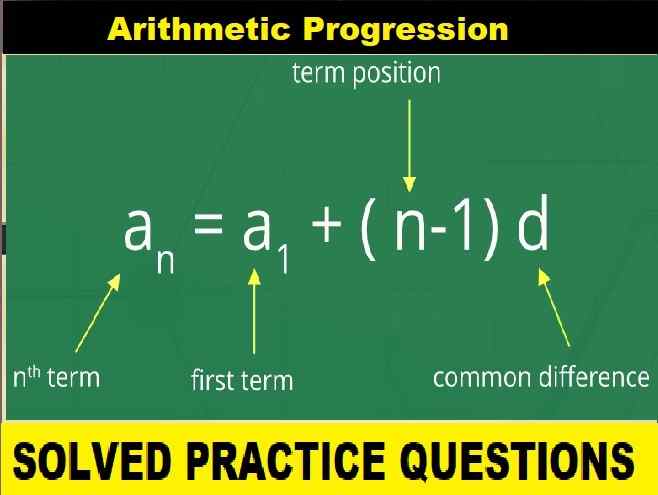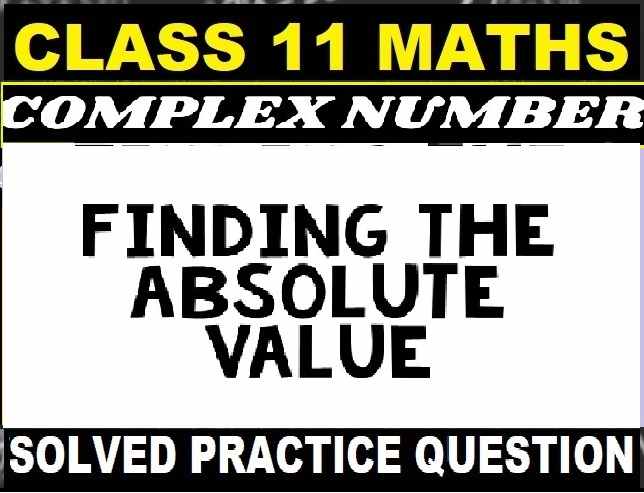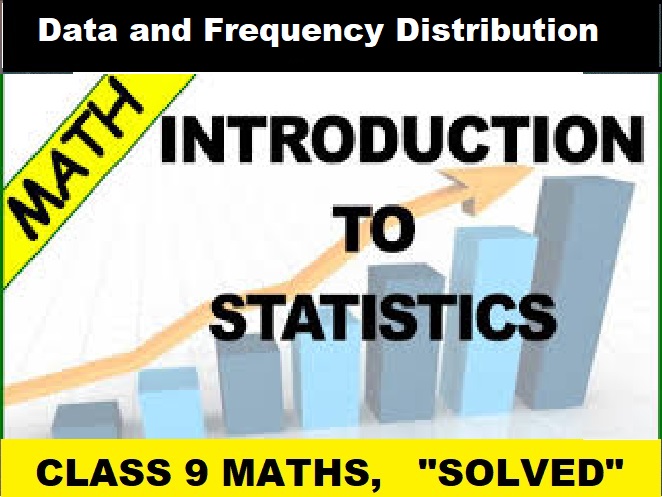Arithmetic Progression Exe-10A Concise Class-10 ICSE Maths Solution Ch-10. We Provide Step by Step Solutions / Answer of questions on general term of AP for Selina Concise Maths. Visit official Website CISCE for detail information about ICSE Board Class-10 Mathematics.

Arithmetic Progression Exe-10A Concise Class-10 ICSE Maths Solution Ch-10
| Board | ICSE |
| Publications | Selina Concise |
| Subject | Maths |
| Class | 10th |
| Chapter-10 | Arithmetic Progression |
| Exe-10A | Solved Questions on General Term of AP |
| Edition | 2025-2026 |
Solved Questions on General Term of AP
Arithmetic Progression Exe-10A Concise Class-10 ICSE Maths Solution Ch-10
Que-1: Which of the following sequences are in arithmetic progression?
(i) 2, 6, 10, 14, …….
(ii) 15, 12, 9, 6,…….
(iii) 5, 9, 12, 18, ……
(iv) 1/2, 1/3, 1/4, 1/5,…..
Ans: (i) 2, 6, 10, 14,………
Here, d = 6 – 2 = 4
10 – 6 = 4
14 – 10 = 4
∴ In each case (d) is same.
∴It is an arithmetic progression.
(ii) 15, 12, 9, 6, ………..
Here, d = 12-15 = -3
9-12 = -3
6-9 = -3
∴ In each case (d) is same.
∴It is an arithmetic progression.
(iii) 5, 9, 12, 18, ……….
Here, d = 9-5 = 4
12-9 = 3
18-12 = 6
∴ In each case (d) is not same.
∴It is not an arithmetic progression.
(iv) 1/2, 1/3, 1/4, 1/5, ………
Here, d = 1/3 – 1/2 = -1/6
1/4-1/3 = -1/12
1/5-1/4 = -1/20
∴ In each case (d) is not same.
∴It is not an arithmetic progression.
Que-2: The nth term of a sequence is (2n – 3), find its fifteenth term.
Ans: Tn = 2n – 3
T15 = 2 x 15 – 3
= 30 – 3
= 27
Que-3: If the pth term of an A.P. is (2p + 3); find the A.P.
Ans: Tp = 2p + 3
and T1 = 2 x 1 + 3 = 2 + 3 = 5
so T2 = 2 x 2 + 3 = 4 + 3 = 7
then T3 = 2 x 3 + 3 = 6 + 3 = 9
∴A.P. is 5, 7, 9,…..
Que-4: Find the 24th term of the sequence : 12, 10, 8, 6,…
Ans: A.P. is 12, 10, 8, 6,……
Here a = 12, d = 10 – 12 = – 2
Tn = a + (n – 1)d
T24 = 12 + (24 – 1) x ( – 2)
= 12 + 23 x ( – 2)
and = 12 – 46
hence = – 34
Que-5: Find the 30th term of the sequence :
1/2,1,3/2,….
Ans:

Que-6: Find the 100th term of the sequence :
√3, 2√3, 3√3,….
Ans:
3, 2√3, 3√3,….
Here a = √3, d = 2√3 – √3 = √3

Que-7: Find the 50th term of the sequence :
Ans: The given sequence is 1n,n+1/n,2n+1/n,……….
Now, n+1/n-1/n=n+1-1/n=n/n=1
2n+1/n-n+1/n=2n+1-n-1/n=n/n=1, etc.
Hence, the given sequence is an A.P. with first term a = 1n and common difference d = 1.
The general term of an A.P. is given by
tn = a + (n – 1)d
=> t50=1n+(50-1)(1)
=>1/n+49
So, the 50th term is 1/n+49.
Que-8: Is 402 a term of the sequence : 8, 13, 18, 23,…?
Ans: In sequence 8, 13, 18, 23,…..
a = 8 and d = 13 – 8 = 5
Let 402 be the nth term, then
402 = a + (n – 1)d = 8 + (n – 1) x 5
402-8/5= n – 1
=> 394/5 = n – 1
394 is not exactly divisible by 5,
∴ 402 is not its term.
Que-9: Find the common difference and 99th term of the arithmetic progression :
7(3/4),9(1/2), 11(1/4),…..
Ans: The given A.P. is 7(3/4),9(1/2),11(1/4),…………….
i.e 31/4,19/2,45/4,………
Common difference = d
= 19/2-31/4
= 38-31/4
= 7/4
= 1(3/4)
First term = a = 31/4
The general term of an A.P. is given by
tn = a + (n – 1)d
=> t99=31/4+(99-1)×7/4
= 31/4+98×7/4
= 717/4
= 179(1/4)
Que-10: How many terms are there in the series:
(i) 4, 7, 10, 13,…..148 ?
(ii) 0.5, 0.53, 0.56,…..1.1 ?
(iii) 3/4, 1, 1(1/4),….3 ?
Ans:
(i)
The given series is 4, 7, 10, 13, ……..,148
7 – 4 = 3, 10 – 7 = 3, 13 – 10 = 3, etc.
Thus, the given series is an A.P. with first term a = 4 and common difference d = 3.
Last term = l = 148
4 + (n – 1)(3) = 148
=> (n – 1) × 3 = 144
=> n – 1 = 48
=> n = 49
Thus, there are 49 terms in the given series.
(ii)
The given series is 0.5, 0.53, 0.56, …….., 1.1
0.53 – 0.5 = 0.03, 0.56 – 0.53 = 0.03, etc.
Thus, the given series is an A.P. with the first term a = 0.5 and common difference d = 0.03
Last term = l = 1.1
0.5 + (n – 1)(0.03) = 1.1
=> (n – 1) × 0.03 = 0.6
=>n – 1 = 20
=>n = 21
(iii)
The given series is 3/4,1,1(1/4),………,3
=> 3/4,1,5/4,………,3
1-3/4=1/4,5/4-1=1/4, etc
Thus, the given series is an A.P. with first term a = 3/4 and common difference d = 1/4.
Last term = l = 3
3/4+(n-1)(1/4)=3
=>(n-1)×1/4=3-3/4
=>(n-1)×1/4=9/4
=>n – 1 = 9
=>n = 10
Que-11: Which term of the A.P. 1 + 4 + 7 + 10 +……is 52 ?
Ans:
The given A.P is 1, 4, 7, 10, …….
Here, first term a = 1 and common difference d = 4 – 1 = 3
Let nth term of the given A.P. be 52
=> 52 = a + (n – 1)d
=> 52 = 1 + (n – 1) × 3
=>51 = (n – 1) × 3
=>n – 1 = 17
=>n = 18
Thus, the 18th term of the given A.P. is 52
Que-12: If 5th and 6th terms of an A.P. are respectively 6 and 5, find the 11th term of the A.P.
Ans: The general term of an A.P. is given by
tn = a + (n – 1)d
Now, t5 = 6
a + (5 – 1)d = 6
a + 4d = 6 …(i)
And t6 = 5
a + (6 – 1)d = 5
a + 5d = 5 …(ii)
Subtracting (ii) from (i), we get
– d = 1
d = –1
Substituting d = –1 in (i), we get
a + 4(–1) = 6
a – 4 = 6
a = 10
tn = 10 + (n – 1)(–1)
t11 = 10 + (11 – 1)(–1)
= 10 – 10 = 0
Que-13: If tn represents nth term of an A.P., t2 + t5 – t3 = 10 and t2 + t9 = 17, find its first term and its common difference.
Ans: Let the first term of an A.P. be a and the common difference be d.
The general term of an A.P. is given by tn = a + (n – 1)d
Now, t2 + t5 – t3 = 10
(a + d) + (a + 4d) – (a + 2d) = 10
a + d + a + 4d – a – 2d = 10
a + 3d = 10 …(i)
Also, t2 + t9 = 17
(a + d) + (a + 8d) = 17
2a + 9d = 17 …(ii)
Multiplying equation (i) by 2, we get
2a + 6d = 20 …(iii)
Subtracting (ii) from (iii), we get
–3d = 3
d = –1
Substituting value of d in (i), we get
a + 3(–1) = 10
a – 3 = 10
a = 13
Hence, a = 13 and d = –1.
Que-14: Find the 10th term from the end of the A.P. 4, 9, 14,…. 254.
Ans: The given A.P. is 4, 9, 14, ………., 254
First term = 4
Common difference = 9 – 4 = 5
Last term = l = 254
For the reverse A.P. first term = 254 and common difference = –5
Thus, 10th term from the end of a given A.P.
= 10th term from the end of a given A.P.
= 254 + (10 – 1) × (–5)
= 254 – 45 = 209
Que-15: Determine the arithmetic progression whose 3rd term is 5 and 7th term is 9.
Ans: For an A.P.
t3 = 5
a + 2d = 5 …(i)
And t7 = 9
a + 6d = 9 …(ii)
Subtracting (i) from (ii), we get
4d = 4
d = 1
Substituting d = 1 in (i), we get
a + 2 × 1 = 5
a = 3
Thus, the required A.P. = a, a + d, a + 2d, a + 3d, …..
= 3, 4, 5, 6, …..
Que-16: Find the 31st term of an A.P. whose 10th term is 38 and 16th term is 74.
Ans: The general term of an A.P. is given by
tn = a + (n – 1)d
Now, t10 = 38
a + 9d = 38 …(i)
And t16 = 74
a + 15d = 74 …(ii)
Subtracting (i) from (ii), we get
6d = 36
d = 6
Substituting d = 6 in (i), we get
a + 9 × 6 = 38
a + 54 = 38
a = –16
tn = –16 + (n – 1)(6)
t31 = –16 + 30 × 6
= –16 + 180 = 164
Que-17: Which term of the series :
21, 18, 15, is – 81 ?
Can any term of this series be zero ? If yes, find the number of term.
Ans: The given A.P. is 21, 18, 15, …….
Here, first term a = 21 and common difference d = 18 – 21 = 3
Let nth term of the given A.P. be –81
–81 = a + (n – 1)d
–81 = 21 + (n – 1) × (–3)
102 = (n – 1) × (–3)
n – 1 = 34
n = 35
Thus, the 35th term of the given A.P. is –81.
Let pth term of this A.P. be 0
21 + (p – 1) × (–3) = 0
21 – 3p + 3 = 0
p = 8
Thus, 8th term of this A.P. is 0
Que-18: An A.P. consists of 60 terms. If the first and the last terms be 7 and 125 respectively, find the 31st term.
Ans: Given : An A.P. consists of 60 terms
a = 7
and a60 = 125
=> a + (60 – 1 )d = 125
and => 7 + 59 d = 125
=> 59d= 125 – 7
then => d = 118/59 = 2
now, a31 = a + (n – 1)d
= 7 + (31 – 1) x 2
and = 7 + 30 x 2
Hence = 67
Que-19: The sum of the 4th and the 8th terms of an A.P. is 24 and the sum of the sixth term and the tenth term is 34. Find the first three terms of the A.P.
Ans: Let ‘a’ be the first term and ‘d’ be the common difference of the given A.P.
t4 + t8 = 24 …(Given)
(a + 3d) + (a + 7d) = 24
2a + 10d = 24
a + 5d = 12 …(i)
And t6 + t10 = 34 …(Given)
(a + 5d) + (a + 9d) = 34
2a + 14d = 34
a + 7d = 17 …(ii)
Subtracting (i) from (ii), we get
2d = 5
d=5/2
a+5×5/2=12
a+25/2=12
Thus we have,
1st term = -12
2nd = a + d
= -1/2+5/2 = 2
3rd term = a + 2d
= -1/2+2×5/2
= -1/2+5 = 9/2
Que-20: If the third term of an A.P. is 5 and the seventh terms is 9, find the 17th term
Ans: Let the first term of an A.P. = a
And the common difference of the given A.P. = d
As, we know that,
an = a + (n – 1)d
∴ a3 = a + (3 – 1)d = a + 2d
Similarly
a7 = a + (7 – 1)d
= a + 6d
Now, we have given,
a + 2d = 5 …(i)
And a + 6d = 9 …(ii)
Now, Subtracting (i) from (ii); we have
4d = 4
d = 1
Now, put the value of d in equation (i); we get
a + 2d = 5
a + 2 × 1 = 5
a + 2 = 5
a = 5 – 2
a = 3
Now, an = a17
= a + (n – 1)d
= 3 + (17 – 1) × 1
= 3 + 16 = 1
— : End of Arithmetic Progression Exe-10A Concise Class-10 ICSE Maths Solution Ch-10 :—
Return to :- Selina Concise Solutions for ICSE Class-10 Maths
Thanks
Please Share with Your Friends


